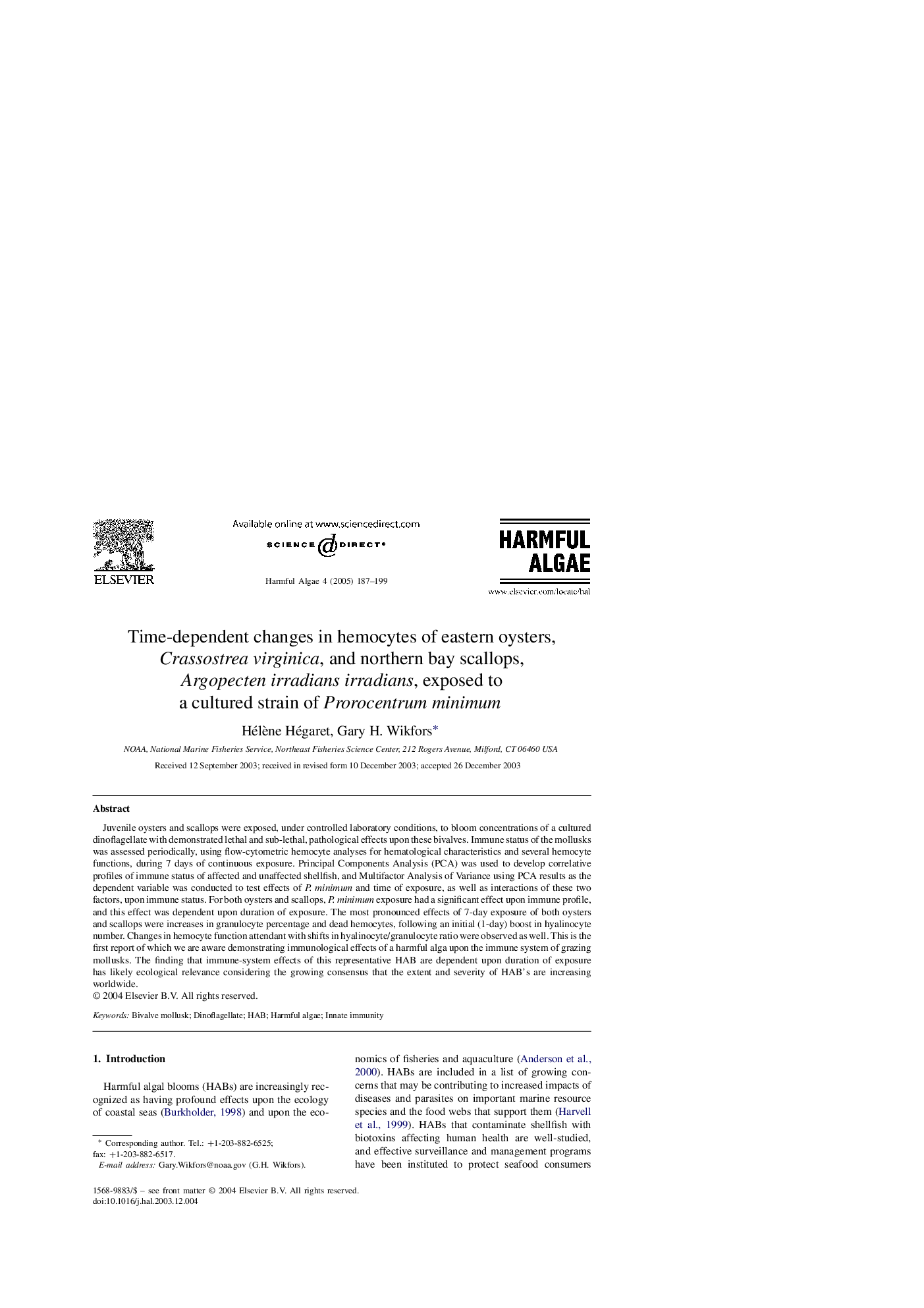| Article ID | Journal | Published Year | Pages | File Type |
|---|---|---|---|---|
| 9482699 | Harmful Algae | 2005 | 13 Pages |
Abstract
Juvenile oysters and scallops were exposed, under controlled laboratory conditions, to bloom concentrations of a cultured dinoflagellate with demonstrated lethal and sub-lethal, pathological effects upon these bivalves. Immune status of the mollusks was assessed periodically, using flow-cytometric hemocyte analyses for hematological characteristics and several hemocyte functions, during 7 days of continuous exposure. Principal Components Analysis (PCA) was used to develop correlative profiles of immune status of affected and unaffected shellfish, and Multifactor Analysis of Variance using PCA results as the dependent variable was conducted to test effects of P. minimum and time of exposure, as well as interactions of these two factors, upon immune status. For both oysters and scallops, P. minimum exposure had a significant effect upon immune profile, and this effect was dependent upon duration of exposure. The most pronounced effects of 7-day exposure of both oysters and scallops were increases in granulocyte percentage and dead hemocytes, following an initial (1-day) boost in hyalinocyte number. Changes in hemocyte function attendant with shifts in hyalinocyte/granulocyte ratio were observed as well. This is the first report of which we are aware demonstrating immunological effects of a harmful alga upon the immune system of grazing mollusks. The finding that immune-system effects of this representative HAB are dependent upon duration of exposure has likely ecological relevance considering the growing consensus that the extent and severity of HAB's are increasing worldwide.
Related Topics
Life Sciences
Agricultural and Biological Sciences
Aquatic Science
Authors
Hélène Hégaret, Gary H. Wikfors,
